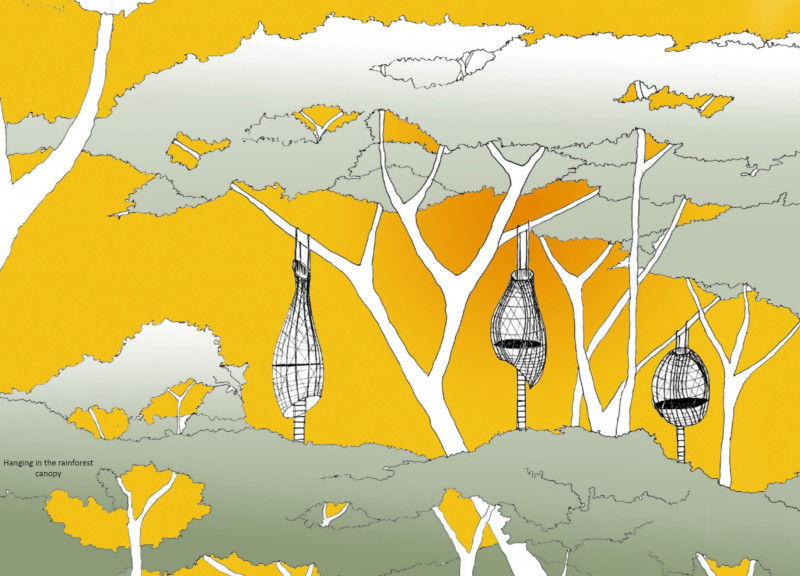5 key facts about this project
The architectural vision emphasizes the use of locally sourced materials, particularly bamboo and regional timber, which serve as the primary elements in construction. The structures are designed to resonate with their natural context, minimizing environmental impact while providing functional living spaces. By utilizing lightweight materials and innovative construction techniques, the project achieves structural integrity and adaptability to varying climatic conditions.
Sustainable Material Usage and Design Strategies
The project's distinctive approach lies in its extensive use of bamboo, known for its tensile strength and rapid growth. This material is fundamental to the structural framework, as it allows for both stability and flexibility. Coupled with timber, which offers compressive strength, the design emphasizes a blend of resilience and lightness. The incorporation of braided natural fibers adds a layer of texture and artistic expression while serving practical purposes in connecting structural elements.
Moreover, the architecture promotes an organic integration into the forest landscape by employing elevated structures that rest within existing trees. This technique prevents disruption of the natural ecosystem and encourages biodiversity. Such an approach not only preserves the environment but also enhances the living experience by offering panoramic views of the landscape.
Cultural Heritage and Environmental Integration
Central to the design philosophy is the respect for local cultural traditions. The project draws inspiration from indigenous building practices, incorporating elements of traditional hut construction, adaptively reinterpreted for contemporary use. This not only honors local craftsmanship but also reinforces community identity through architectural expression. The structures are designed to ensure that they resonate with the cultural narratives of the region, promoting a sense of belonging among inhabitants.
The architectural arrangement allows for adaptability in design, catering to the specific environmental conditions and user needs. Each structure can be customized, reflecting the topographical and ecological context, which further enhances its functionality and significance. In this way, the project stands apart from conventional constructions by prioritizing ecological concerns and cultural relevance.
For a comprehensive understanding of the "Nestling Machang" project, viewers are encouraged to explore architectural plans, sections, and specific design elements that illustrate the unique integration of architecture and natural landscapes. These resources provide deeper insights into the thought process behind the design, showcasing how the project aligns with contemporary architectural ideas focused on sustainability and cultural authenticity.























